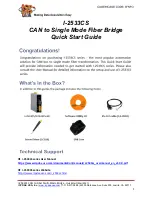
Glossary
384
refresh
The process of updating output status sent to external devices so that it
agrees with the status of output bits held in memory and of updating input
bits in memory so that they agree with the status of inputs from external de-
vices.
relay-based control
The forerunner of PCs. In relay-based control, groups of relays are intercon-
nected to form control circuits. In a PC, these are replaced by programmable
circuits.
Remote I/O Master Unit
The Unit in a Remote I/O System through which signals are sent to all other
Remote I/O Units. The Remote I/O Master Unit is mounted either to a CPU
Rack or an Expansion I/O Rack connected to the CPU Rack. Remote I/O
Master Unit is generally abbreviated to Master.
Remote I/O Slave Unit
A Unit mounted to a Backplane to form a Slave Rack. Remote I/O Slave Unit
is generally abbreviated to Slave.
Remote I/O System
A system in which remote I/O points are controlled through a Master
mounted to a CPU Rack or an Expansion I/O Rack connected to the CPU
Rack.
Remote I/O Unit
Any of the Units in a Remote I/O System. Remote I/O Units include Masters,
Slaves, Optical I/O Units, I/O Link Units, and Remote Terminals.
remote I/O word
An I/O word allocated to a Unit in a Remote I/O System.
reset
The process of turning a bit or signal OFF or of changing the present value of
a timer or counter to its set value or to zero.
return
The process by which instruction execution shifts from a subroutine back to
the main program (usually the point from which the subroutine was called).
reversible counter
A counter that can be both incremented and decremented depending on the
specified conditions.
reversible shift register
A shift register that can shift data in either direction depending on the speci-
fied conditions.
right-hand instruction
Another term for terminal instruction.
rightmost (bit/word)
The lowest numbered bits of a group of bits, generally of an entire word, or
the lowest numbered words of a group of words. These bits/words are often
called least-significant bits/words.
rotate register
A shift register in which the data moved out from one end is placed back into
the shift register at the other end.
RUN mode
The operating mode used by the PC for normal control operations.
scheduled interrupt
An interrupt that is automatically generated by the system at a specific time
or program location specified by the operator. Scheduled interrupts result in
the execution of specific subroutines that can be used for instructions that
must be executed repeatedly for a specified period of time.
self diagnosis
A process whereby the system checks its own operation and generates a
warning or error if an abnormality is discovered.














































